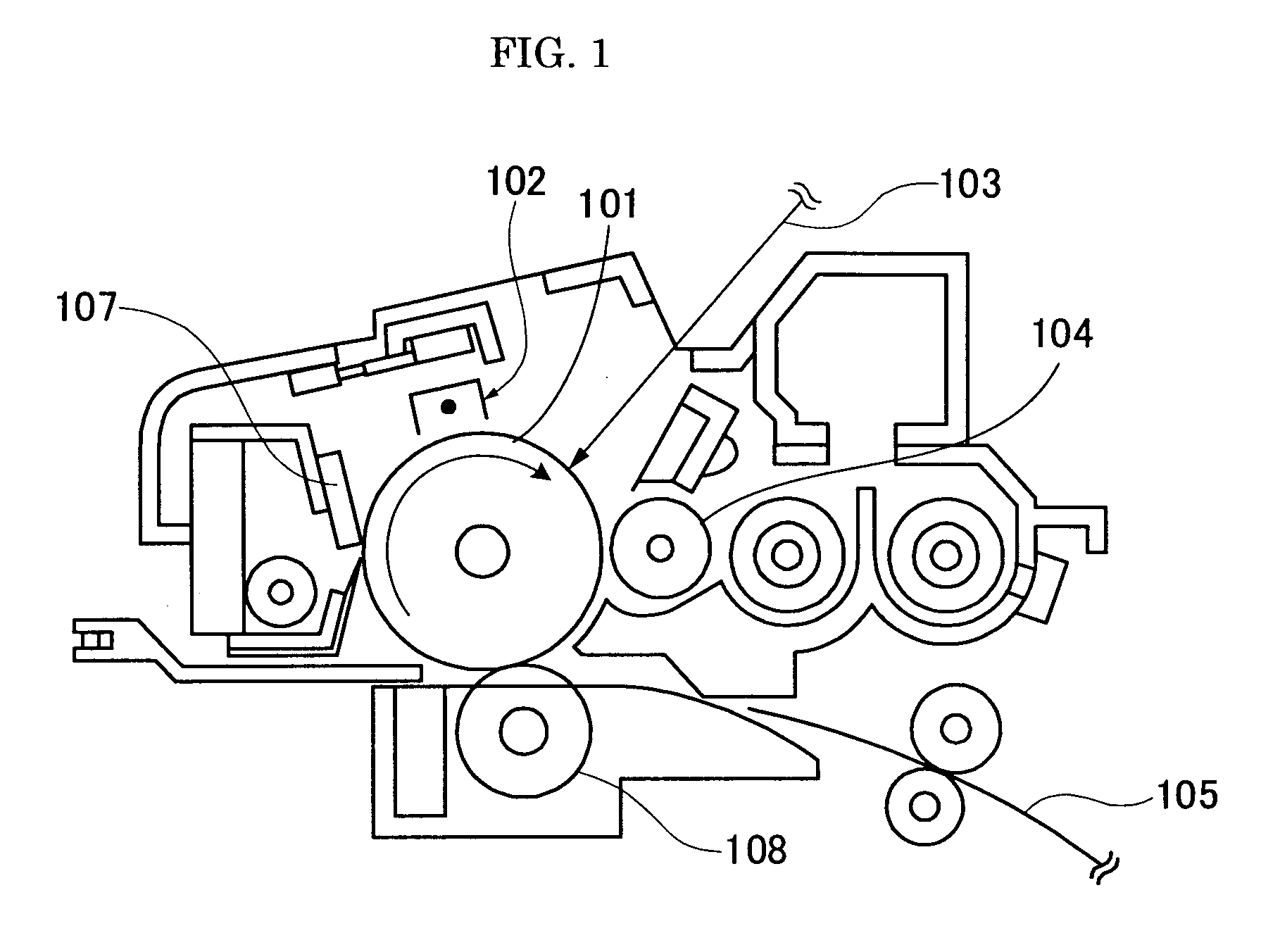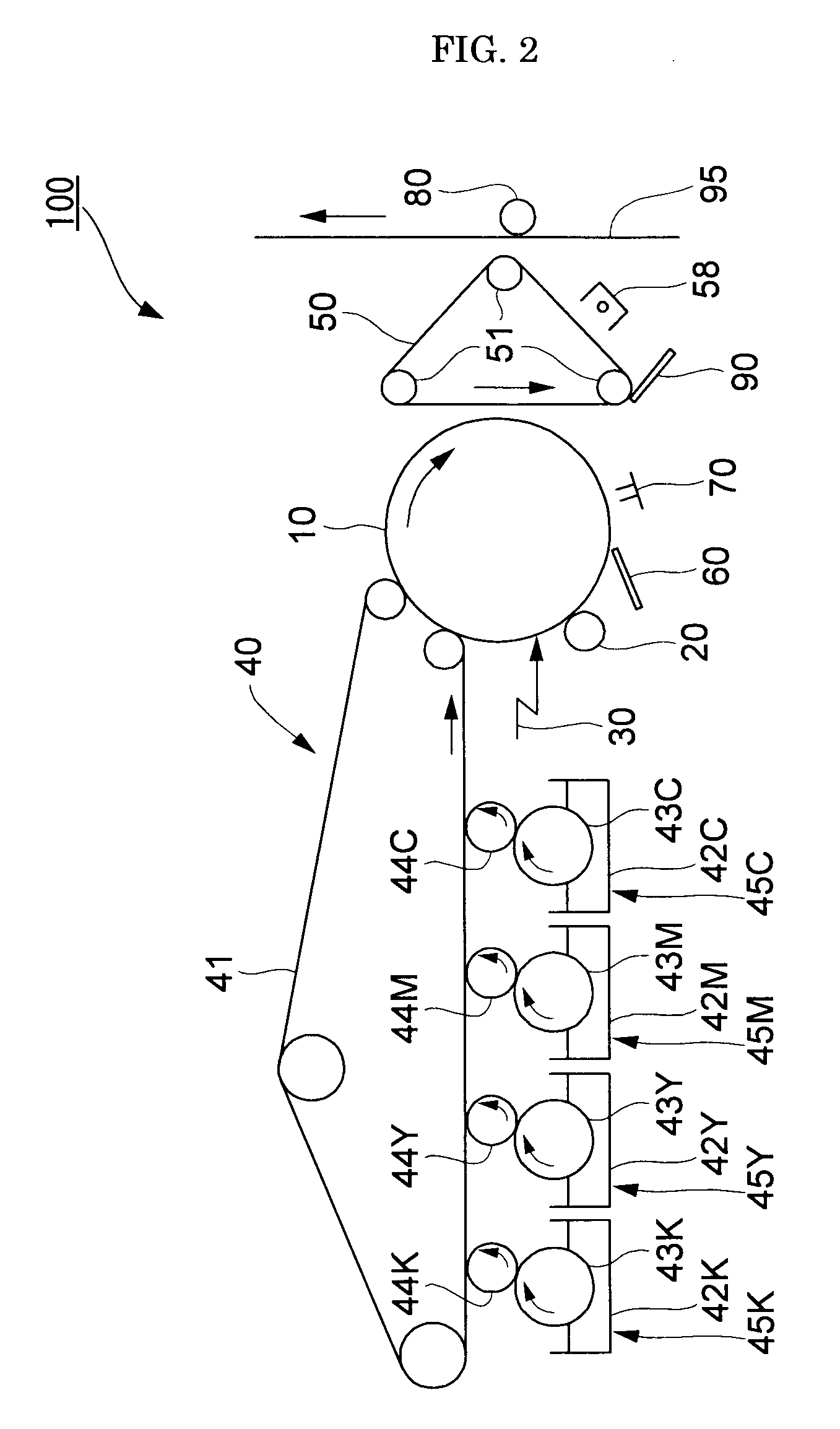Toner, production method thereof, developer, toner container, process cartridge, image forming method, and image forming apparatus
- Summary
- Abstract
- Description
- Claims
- Application Information
AI Technical Summary
Benefits of technology
Problems solved by technology
Method used
Image
Examples
example 1
Adhesive Base Formation Process
[0336]Toner was produced in the manner described below.
[0337]—Preparation of Solution / Dispersion of Toner Materials—
[0338]—Synthesis of Unmodified Polyester (Low Molecule Polyester)—
[0339]To a reactor equipped with a cooling pipe, an agitator and a nitrogen feed tube was added 67 parts of an ethylene oxide bisphenol A 2 mol adduct, 84 parts of bisphenol A propion oxide 3 mol adduct, 274 parts of terephthalic acid, and 2 parts of dibutyltin oxide. These ingredients were reacted for 8 hours at normal pressure at 230° C. Next, the resultant reaction solution was reacted for 5 hours under the reduced pressure of 10 mmHg to 15 mmHg, preparing a unmodified polyester.
[0340]The obtained unmodified polyester had a number average molecular weight (Mn) of 2,100, a weight average molecular weight of 5,600, and a glass transition temperature (Tg) of 55° C.
[0341]—Preparation of Master Batch (Mb)—
[0342]Using Henschel mixer (manufactured by Mitsuikozan Co., Ltd.) 1,00...
example 2
[0364]Toner base particles of Example 2 were produced in the same manner as in Example 1 except that in the preparation of an aqueous medium phase, polyethyleneglycol dibehenate No. 1 was changed to polyethyleneglycol dibehenate No. 2 (weight average molecular weight=2,500, melting point=52° C.).
example 3
[0365]Toner base particles of Example 3 were produced in the same manner as in Example 1 except that in the preparation of an aqueous medium phase, polyethyleneglycol dibehenate No. 1 was changed to polyethyleneglycol dibehenate No. 3 (weight average molecular weight=8,000, melting point=60° C.), and that the added amount of the fine resin particle dispersion was doubled (120 parts).
PUM
| Property | Measurement | Unit |
|---|---|---|
| Length | aaaaa | aaaaa |
| Length | aaaaa | aaaaa |
| Percent by mass | aaaaa | aaaaa |
Abstract
Description
Claims
Application Information
 Login to View More
Login to View More - R&D
- Intellectual Property
- Life Sciences
- Materials
- Tech Scout
- Unparalleled Data Quality
- Higher Quality Content
- 60% Fewer Hallucinations
Browse by: Latest US Patents, China's latest patents, Technical Efficacy Thesaurus, Application Domain, Technology Topic, Popular Technical Reports.
© 2025 PatSnap. All rights reserved.Legal|Privacy policy|Modern Slavery Act Transparency Statement|Sitemap|About US| Contact US: help@patsnap.com



